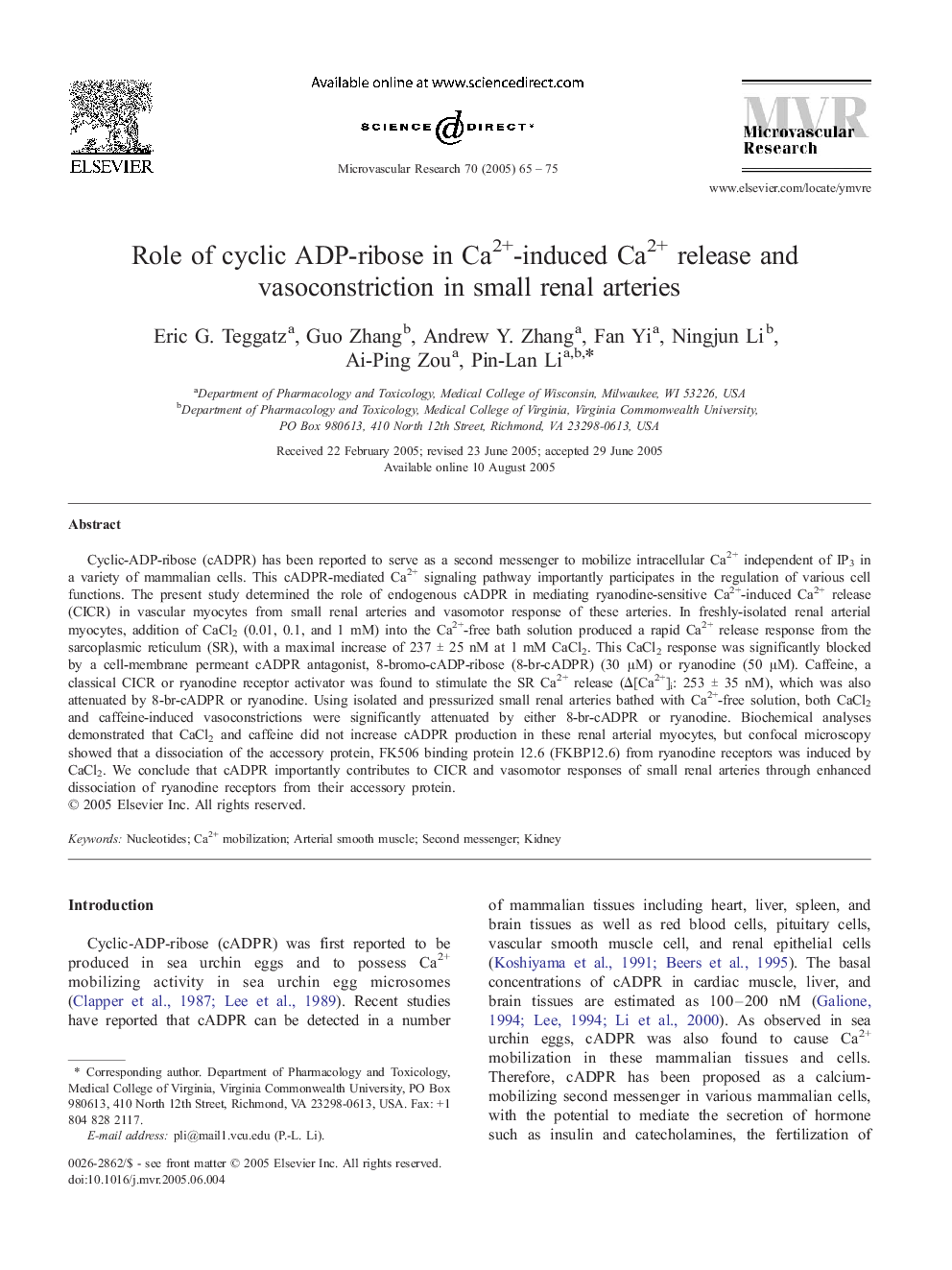| Article ID | Journal | Published Year | Pages | File Type |
|---|---|---|---|---|
| 9893117 | Microvascular Research | 2005 | 11 Pages |
Abstract
Cyclic-ADP-ribose (cADPR) has been reported to serve as a second messenger to mobilize intracellular Ca2+ independent of IP3 in a variety of mammalian cells. This cADPR-mediated Ca2+ signaling pathway importantly participates in the regulation of various cell functions. The present study determined the role of endogenous cADPR in mediating ryanodine-sensitive Ca2+-induced Ca2+ release (CICR) in vascular myocytes from small renal arteries and vasomotor response of these arteries. In freshly-isolated renal arterial myocytes, addition of CaCl2 (0.01, 0.1, and 1 mM) into the Ca2+-free bath solution produced a rapid Ca2+ release response from the sarcoplasmic reticulum (SR), with a maximal increase of 237 ± 25 nM at 1 mM CaCl2. This CaCl2 response was significantly blocked by a cell-membrane permeant cADPR antagonist, 8-bromo-cADP-ribose (8-br-cADPR) (30 μM) or ryanodine (50 μM). Caffeine, a classical CICR or ryanodine receptor activator was found to stimulate the SR Ca2+ release (Î[Ca2+]i: 253 ± 35 nM), which was also attenuated by 8-br-cADPR or ryanodine. Using isolated and pressurized small renal arteries bathed with Ca2+-free solution, both CaCl2 and caffeine-induced vasoconstrictions were significantly attenuated by either 8-br-cADPR or ryanodine. Biochemical analyses demonstrated that CaCl2 and caffeine did not increase cADPR production in these renal arterial myocytes, but confocal microscopy showed that a dissociation of the accessory protein, FK506 binding protein 12.6 (FKBP12.6) from ryanodine receptors was induced by CaCl2. We conclude that cADPR importantly contributes to CICR and vasomotor responses of small renal arteries through enhanced dissociation of ryanodine receptors from their accessory protein.
Related Topics
Life Sciences
Biochemistry, Genetics and Molecular Biology
Biochemistry
Authors
Eric G. Teggatz, Guo Zhang, Andrew Y. Zhang, Fan Yi, Ningjun Li, Ai-Ping Zou, Pin-Lan Li,
